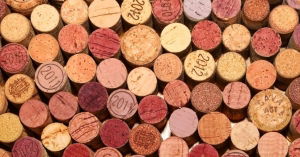BLOG
appellations
Every wine appellation in France has a cahier des charges, a set of regulations that delineates the production zone and specifies viticultural practices and production standards.
In many instances, a single cahier des charges references one zone of production and multiple wine styles within it (e.g. Lirac red, white, and rosé; Rasteau dry red, plus red, white and rosé Vins Doux Naturels). Some single cahiers also incorporate complementary geographic denominations or dénominations géographiques complémentaires (DGCs) such as Languedoc Montpeyroux or Bourgogne Hautes Côte de Nuits. Other times, very different wines can be grouped under one single cahier as is the case for Beaujolais, Beaujolais Supérieur, Beaujolais + Named Commune, and Beaujolais-Villages.
Few consumer products in the world are more steadfastly focused on origin than wine. Think of the last great bottle of wine you enjoyed and, odds are, its place of origin featured prominently on the label.
Known as appellations, these defined areas of wine production have fostered a fanatical faithfulness to origin across the industry. Whether it is a Chianti Classico or a Chambolle-Musigny, a Napa Cabernet Sauvignon or a Chenin Blanc from Stellenbosch, how we interpret wine often comes down to how we interpret the place of origin.
While the general concept around the world is the same, the approach certainly is not. In the European sense, appellations define not only the boundaries of a region but the permissible production of wine (including grape varieties, yields, winemaking techniques and more).
“It is better to call non-European systems of this sort ‘Geographical Indications,’ since outside Europe it is generally only a producing zone which is defined,” says wine journalist and critic, Andrew Jefford. “Grape varieties and production methods are left up to the producer, and are a matter of free choice.”
Studying the differences and similarities among appellations, as well as their traditions and modifications, can lead to a lifetime of enjoyment — or frustration.
“The tail is vigorously wagging the dog,” says wine writer Robert Joseph, who is also a producer and wine analyst. He notes that too many places lack the distinction required to make appellations practical, useful and relevant to today’s consumer. Add in the not-so-little wrinkle of climate change, and the very purpose of appellations going forward becomes a rousing debate.
So: are appellations too “rooted to the spot” to be useful in a changing world? Or do they still offer producers the best chance to market their wines on a crowded global marketplace? We sat down with Andrew Jefford and Robert Joseph and hashed it out.


